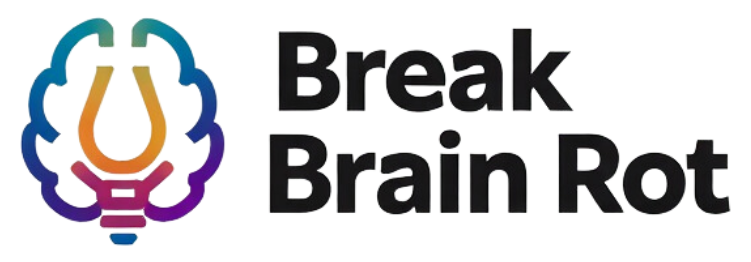Table of Contents
- What is Dopamine Fasting?
- What is Dopamine Detox?
- Dopamine Fasting vs Dopamine Detox – Key Differences
- The Science of Brain Rot and Dopamine Overload
- How to Implement Dopamine Fasting or Detox Effectively
- Potential Risks and Misconceptions
- Tips for Long-Term Cognitive Health
- FAQs
- Conclusion
What is Dopamine Fasting?
Definition and Origins
Dopamine fasting is a self-imposed period where you deliberately avoid activities that give you quick bursts of pleasure—like checking social media, binge-watching shows, or constant snacking. The concept took off in Silicon Valley as tech workers sought ways to regain control over their attention spans in an environment engineered for distraction.
Core Principles
The core idea isn’t literally “fasting” from dopamine—your brain needs dopamine to function—it’s about limiting the high-intensity stimuli that can desensitize your brain’s reward pathways. By scaling back, you allow your mind to recalibrate, making everyday activities feel more rewarding again.
Common Techniques and Duration
Some practice short dopamine fasts—just a few hours in the morning without any digital input—while others set aside whole days. Common techniques include unplugging from devices, spending time in nature, meditating, or engaging in slow, intentional activities like reading a physical book.
Related reading: How to Start a Digital Detox | Harvard Health on Dopamine and Habits
What is Dopamine Detox?
Definition and Popular Misconceptions
Dopamine detox, often popularized on YouTube and productivity blogs, is a more intense approach. The misconception is that you can “flush” dopamine from your system entirely—this isn’t scientifically possible. Instead, it’s really about drastically reducing exposure to stimulating triggers in a controlled period.
Science-Backed Approach
Neurologically, a dopamine detox is about giving your brain’s reward circuitry a break from constant overstimulation. This can help restore motivation and make low-stimulation tasks—like working on a project or reading—feel more engaging again.
Examples of a Detox Day
A detox day might include: turning off your phone entirely, abstaining from TV and video games, eating simple foods, spending quiet time outdoors, and practicing mindfulness meditation.
Related reading: Mindfulness Techniques for Better Focus | Stanford Neuroscience on Dopamine
Dopamine Fasting vs Dopamine Detox – Key Differences
Goals and Timeframes
Dopamine fasting is designed to be integrated regularly into your routine—think of it as a sustainable reset button. Dopamine detox is more like an occasional deep clean, used sparingly for maximum impact.
Activities and Restrictions
Fasting generally allows low-stimulation activities like walking or journaling. Detox, by contrast, often eliminates almost every external stimulus within the set period.
Suitability for Different Lifestyles
If you have a busy schedule with family or work commitments, a fast may be easier to adopt regularly. If you can completely disconnect for a day or weekend, a detox might deliver a more noticeable short-term jolt to your focus levels.
The Science of Brain Rot and Dopamine Overload
Understanding Brain Rot
“Brain rot” isn’t a clinical term, but it effectively describes a state of mental stagnation and fatigue caused by constant exposure to novelty and instant rewards. Symptoms can include poor focus, irritability, and decreased motivation.
Dopamine Pathways and Reward Systems
Dopamine is a neurotransmitter that helps regulate pleasure, reward, and motivation. Over time, constant micro-rewards—from likes, messages, or game levels—can dull your brain’s sensitivity, making ordinary tasks less appealing.
Digital Era Habits and Their Impact
Social media, binge-watching, and unlimited on-demand content prime you for quick-hit dopamine releases. This can shift your brain’s baseline, so you need ever-greater stimulation to feel satisfied.
Source: National Institute on Drug Abuse – Dopamine and Behavior
How to Implement Dopamine Fasting or Detox Effectively
Preparation Steps
First, identify your biggest triggers—apps, activities, or habits that give you the most instant gratification. Then, set timeframes and boundaries for your fast or detox.
Daily Routines to Support Reset
- Begin your day device-free for the first hour.
- Schedule deep work blocks paired with mindful breaks.
- Journal your thoughts to track mental clarity.
Measuring Progress and Adjusting Methods
Notice improvements in your mood, focus, and task completion rates. Adjust the frequency or intensity depending on your results.
Related reading: Productivity Hacks Without Burnout
Potential Risks and Misconceptions
Unrealistic Expectations
A single detox or fast won’t permanently “reset” your brain—it’s the consistent practice and habit changes that make lasting improvements.
Mental Health Considerations
If you struggle with depression or anxiety, complete isolation from pleasurable activities might worsen symptoms. Aim for balance rather than total deprivation.
Misuse of the Concept on Social Media
Many influencers oversimplify or exaggerate dopamine fasting claims. Always cross-check with reliable neuroscience sources before adopting extreme practices.
Tips for Long-Term Cognitive Health
Balanced Stimulation
Engage in activities that are rewarding but not overstimulating—cooking, walking, or creative hobbies can provide healthy dopamine boosts.
Nutrition, Sleep, and Movement
Eat whole foods rich in omega-3s, get 7–9 hours of quality sleep, and exercise regularly to support healthy brain chemistry.
Building Resilient Dopamine Pathways
Over time, moderate and balanced engagement with rewarding activities helps your brain enjoy both small pleasures and larger life goals.

Frequently Asked Questions
What is the difference between dopamine fasting and dopamine detox?
Dopamine fasting is a regular reduction of stimulating activities, while dopamine detox is a short-term, intensive break from nearly all stimuli.
How long should a dopamine fast last?
Anywhere from a few hours to a full day, depending on your schedule and comfort level.
Can dopamine detox actually cure brain rot?
It can help reduce symptoms, but real improvement requires ongoing changes to habits and lifestyle.
Do I have to give up all enjoyable activities?
No—focus on reducing high-intensity, addictive stimuli, not eliminating joy from your life.
How often should I do a dopamine detox?
Some choose once a month, others a few times a year. Regular fasting may make detoxes less necessary.
Conclusion
When comparing dopamine fasting vs dopamine detox, the best choice depends on your lifestyle and goals. Fasting offers a sustainable, low-pressure reset you can integrate into your week. Detoxing delivers a sharper, short-term break that can shock your brain back into focus. Both can be powerful tools if approached mindfully, with realistic expectations. To truly break brain rot, combine intentional rest, mindful habits, and balanced stimulation. Start small—your brain will thank you.

